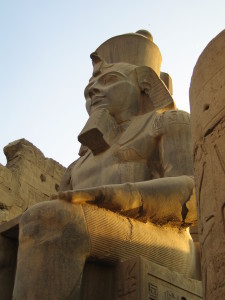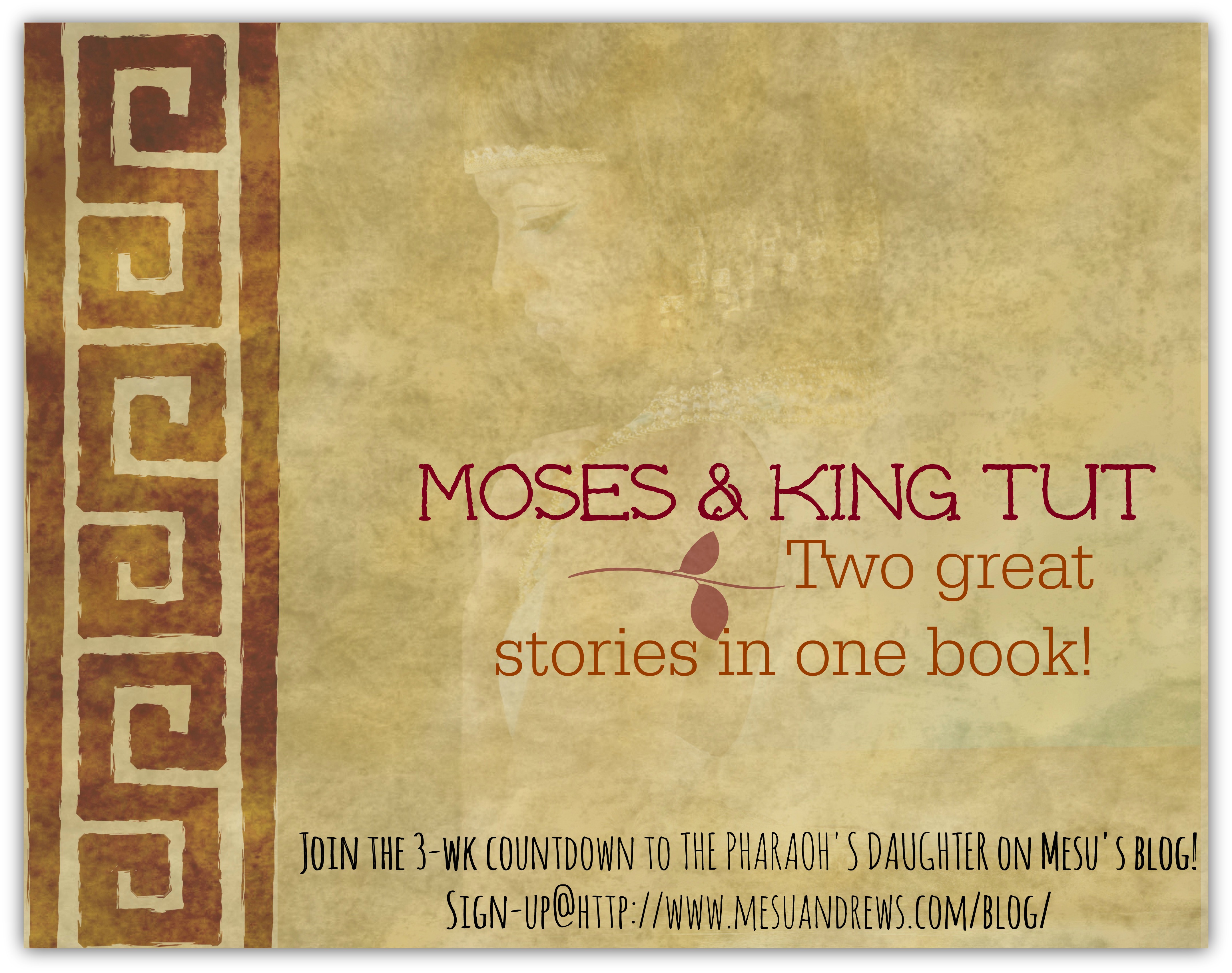 I don’t know about you, but when I encounter a genealogy in the Bible, I’ve been known to skip the whole thing and resume reading at the narrative. Can I get an, “Amen, Sistah”?
I don’t know about you, but when I encounter a genealogy in the Bible, I’ve been known to skip the whole thing and resume reading at the narrative. Can I get an, “Amen, Sistah”?
And what’s with biblical ages? Seriously. Who can keep track of folks whose lifespan is 600 years—or more? Even people like Abraham or Job that hovered around 200—sheesh! Did those guys have to wait on their mid-life crisis until they turned 100—no sports cars or hair dye ‘til they hurdled that century mark?
Perhaps those long lifespans explain why I used to be more tolerant with historians who varied by fifty or a hundred years on biblical character ages and/or events. However, when I began studying Egypt, the dating became trickier, and I realized—fifty or a hundred years makes a HUGE difference!
Would any of you be upset if I placed World War II fifty years later in history and said Bill Clinton was the president that signed those peace agreements? See what I mean? Plus or minus fifty years makes a sizeable difference when you know the people and personalities involved…
The Bible’s Unanswered Questions
Before we get too wound up about history and dates and names, let’s step back and remember why the Bible was written in the first place. The Bible is God’s Word, meticulously written and guarded as a precursor to His Living Word. The Bible holds lots of accurate history, but it is most importantly His-story.
Because its primary purpose is to shed light on Who God is and His plan to redeem His Creation, some historical details are necessarily absent. Not omitted because of oversight or God’s shortfall of knowledge, but missing because they have little or no bearing on God’s ultimate redemption of humankind.
Here’s an illustration that hits too close to home. In my soon-to-be-released The Pharaoh’s Daughter, the story ends when Moses is eighteen years old. However, in the original rough draft, the story continued until Moses was forty and killed the Egyptian slave master who he found beating a Hebrew (Ex.2:11-13).
Why cut nearly twenty percent of my story, you ask? Believe me, I asked my editor the same question, and her answer was spot-on: “Because the book is primarily about The Pharaoh’s Daughter, not Moses.”
A finely-tuned story maintains the golden thread of purpose through every word, paragraph, page, and chapter. God’s Word is the most finely-tuned story ever written, and God’s purpose is to tell His-story, not history.
One Unnamed Pharaoh or Many?
As I studied the various dynasties of Egypt—groupings of kings defined by cultural similarities—I believe Exodus 1 describes three specific kings, not a single Pharaoh as I had believed before my study began.
The New Kingdom, and specifically King Ahmose, was the first to “deal shrewdly” with the Israelites, but by the end of this dynasty the Hebrews had been forced into harsher servitude.
“Then a new king, to whom Joseph meant nothing, came to power in Egypt. ‘Look,’ he said to his people, ‘the Israelites have become far too numerous for us. Come, we must deal shrewdly with them or they will become even more numerous and, if war breaks out, will join our enemies, fight against us and leave the country.’” Exodus 1:8-10
I believe King Ramesses II, of the Ramessid Dynasty, would have been king when Moses returned from Exile in Midian (after fleeing for his life when he killed the Egyptian slave master). Historical data shows Ramesses II building the two store cities mentioned in Exodus 1:11-14. Notice the increased ruthlessness as the Israelites’ bondage continued—reaching the fulfillment of its 400+ years.
“So they put slave masters over them to oppress them with forced labor, and they built Pithom and Rameses as store cities for Pharaoh. But the more they were oppressed, the more they multiplied and spread; so the Egyptians came to dread the Israelites and worked them ruthlessly. They made their lives bitter with harsh labor in brick and mortar and with all kinds of work in the fields; in all their harsh labor the Egyptians worked them ruthlessly.” Exodus 1:11-14
Back to the New Kingdom, specifically during the reign of King Tutankhamun (King Tut), we meet the Pharaoh of the edict—the Hebrew baby-killin’ king.
“The king of Egypt said to the Hebrew midwives, whose names were Shiphrah and Puah, ‘When you are helping the Hebrew women during childbirth on the delivery stool, if you see that the baby is a boy, kill him; but if it is a girl, let her live.’” Exodus 1:15-16
Why King Tut?
Though the Bible isn’t the complete historical record of world events, it is always the foundational layer of Truth in my novels. I always try to find a Scripture to begin building the story. Historical facts provide a secondary layer. This is my fifth book, and I’ve never had to choose either biblical Truth OR historical fact. The two have always been compatible—with a few tears and a lot of prayer for God’s direction.
Exodus 7:7 tells us Moses was eighty years old when he returned from his Midianite exile to confront Pharaoh at the time of the exodus. Many scholars disagree on the dating of Israel’s exodus from Egypt, but after weighing the pros and cons, I chose the late date of 1250 BCE. Discovering the Pharaoh of the edict became a matter of simple mathematics:
1250 BCE + 80 (Moses’s age) = 1330 BCE – Who was king?
Most of the lists of Pharaoh’s agreed that King Tut was the king during 1330 BCE. Great! Fabulous! Cool! But wait…King Tut was too young to have a Pharaoh’s daughter that could rescue baby Moses from the Nile! Drat! Bummer! Eeee-Gad!
God’s Word Stands
It seems I hit this kind of roadblock at least once with every book—one seemingly insurmountable, impenetrable, impossible historical gullywasher. But each time, God shows me a way that His Word remains True in the face of historical fact.
This time, the Lord directed me to a book that listed not only the wives of Pharaohs but also their sisters and daughters. When I saw that King Tut had sisters—who would have been called Pharaoh’s daughters—I saw the way out of my conundrum.
In my story, it is Tut’s sister Anippe, The Pharaoh’s Daughter, who rescues the Hebrew babe from the Nile—and shows Yahweh’s amazing power through the life of an Egyptian princess. I’ve learned that no matter what archeologists uncover, God’s fingerprints are on it. His Word indeed is True, and I need not be afraid to research and study the past.
“Your word, Lord, is eternal; it stands firm in the heavens. Your faithfulness continues through all generations; you established the earth, and it endures. Your laws endure to this day, for all things serve you.” Psalm 119:89-91
Tweet-A-Licious!
- The Bible, a finely-tuned story that maintains its purpose thru every word, page, and chapter.
- The Bible is history, but it is most importantly His-story.
- God repeatedly shows the Truth of His Word in continuing revelations of historical fact.
Today’s Question:
- How important is it to you that the biblical novels you read are historically accurate? Why/why not?




Comments 11
Love it when things all come together. God has blessed you tremendously. To be able to research these things and to find God’s hand on them so you can tell a story for us to enjoy and make us think is indeed great blessing for you and us.
Author
I totally agree–God is sooooo good! I’m blessed to be able to do what I love and share it with other folks. 😉
Mesu, you really do amaze me. I know God leads you because honestly I don’t think most of us would even know where to start researching a story like The Pharaoh’s Daughter. And Amen Sistah!!!
Author
Amen Sistah on the genealogies, for sure! 😉 And I’ve always been stubborn, so it’s nice to be able to put it to good use…on research. 😉
Mesu, God has truly blessed you in a unique way. Your research brings out things that makes me go ‘hmmmmm never thought of that but you know……’ You are a blessing! Linda
Author
Love it when I can make folks say, “Hmmmmmm…” 😉
I always find validation in your works, because I feel that it is God’s will that you write so that people (me in particular) may know the rest of these stories. I really do feel that it is God who guides you in these works. Thank you for your strong faith. Your friend, Irene
Author
Thank you so much, Irene. Your words are an encouragement to continue this writing journey. The Lord is my strength and my song. I will rejoice in Him, and I’ll praise Him for placing people like you in my world. Blessings on you, dear one! 😉
MESU, Your books leave me thirsting for more stories and more information. I can’t wait to get hold of THE PHAROAH’S DAUGHTER on March 17th. I plan on going directly to my favorite Christian bookstore. When I read your books I emmerse myself in them. I can visualize myself as a bystander watching the events unfold before me. I find it compelling, alluring I can’t stop myself. The whole time I feel that it is God telling the story, as if it belongs to the Bible. Thirsting for more, Irene
Author
Bless your sweet heart, Irene! I’m thrilled you enjoy the books, and I can’t wait to introduce you to Anippe and the wonderful characters in Moses’s life! Please let me know what you think of the latest story. 😉
Pingback: Look Inside My Research Process - Mesu Andrews